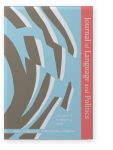Vol. 17:4 (2018) ► pp.485–510
Partisan follow-ups
Editorial slant among newspapers during the 2013 Japanese Upper House election
This study examines patterns of demand statement distribution in newspaper editorials during the 2013 Japanese House of Councillors (i.e., Upper House) election in anticipation that their ideological slant will become salient in the skewed patterns of certain linguistic forms. Distribution patterns in this study contradict the predictions inferable from the ideological slant of newspapers. In particular, this study finds that a conservative newspaper distributes its demands equally at both sides of the political spectrum. However, this study finds that this newspaper frequently – and exclusively – employs partisan follow-ups (wherein a demand statement directed at all parties or candidates is followed by an example of concrete action/inaction by a certain party) in an implicit attempt to express its view in favor of the ruling coalition of conservative parties.
Article outline
- 1.Introduction
- 2.History and ideological orientation of major Japanese newspapers
- 3.Editorials in major Japanese newspapers
- 4.Recent studies
- 5.Demand statements
- 6.Method
- 7.2013 House of councillors (i.e., Upper House) election
- 8.Results
- 9.Discussion
- The Asahi Shimbun
- The Mainichi Shimbun
- The Sankei Shimbun
- The Yomiuri Shimbun
- 10.Summary and evaluation
- Acknowledgements
- Notes
-
References
